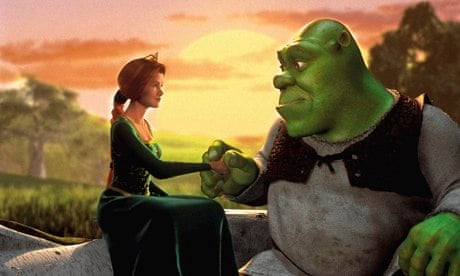Is beauty in the eye of the beholder? What is language? Can you have a private language? Is life ever not worth living? Should a leader conceal the truth if it saves more lives to do so?
These are some of the most profound questions anyone may be faced with and you would be forgiven for thinking that they were taken from an undergraduate philosophy degree programme. But actually these questions are all tacitly asked by stories:
Is beauty in the eye of the beholder? (Shrek by William Steig)
What is language? (Knuffle Bunny by Mo Willems)
Can you have a private language? (Alice Through The Looking Glass by Lewis Carrol)
Is life ever not worth living? (The Seven Voyages of Sindbad from The Arabian Nights)
Should a leader conceal the truth if it saves more lives to do so? (The Odyssey by Homer)
Stories are regularly used as teaching tools, but the potential for thinking with them is often overlooked. We learn that it's wrong to break into other people's houses from having The Three Bears read to us, and we understand the dangers of talking to strangers from Little Red Riding Hood. But have you ever thought about the ethics of bargaining away your own brother's life to secure your survival in The Three Billy Goats Gruff? Or that Jack (of the beanstalk fame) finds his happily-ever-after through breaking and entering, stealing someone's valuables and then murdering them.
The key to thinking with stories is to activate your audience. Most story listeners enter into a passive mode of reception. They listen and learn from what Marie Shedlock called "the career of the hero". But by employing a few simple techniques you can have your class enter into a much more active mode of engagement.
Here are a few ideas to whet your appetite:
Tension point
Most of the time, we read a story to the end and then ask questions about it; often discussions won't go much further than plot recall. All stories have a tension or crisis point where the character or characters are faced with a problem. It's at this point that you should ask your question: what would you do? What should you do? What would be the best thing to do? How can we decide? And always follow your questions by asking why.
Second guess
Just like the innovative Fighting Fantasy Gamebooks by Ian Livingstone and Steve Jackson, you can employ a simple second-person shift to engage your students. This may simply be asking questions, such as those listed above, or you may give the class a role in the story. They could be Odysseus's crew stuck in the cave with the Cyclops, or they may be asked to consider an issue from a particular character's point of view. You could ask: "If you were Sindbad what would you decide?"
This enables you to push the angst of real decision-making on a younger audience. Since they're thinking from Sindbad's point of view, they will have to choose one way or the other – what's their decision? You can even tell stories that put your audience in the story: "One day you wake up to discover that you have turned into a beetle…" (basing your story on Metamorphosis by Franz Kafka and adapting it into a full second-person story).
Story distance
Finally, stories place a protective distance between the audience and the events they are considering. For instance, one can consider what one would or should do in a life-threatening situation without one's life actually being in danger.
But there is another way that story distance can benefit a class. There are issues that one would usually never dream of discussing with a young audience that suddenly become approachable when they are encountered in a story. For example, I would never feel comfortable discussing the issue of suicide directly with a class of primary school-aged children. But a discussion about whether Sindbad was right to consider allowing a giant snake to "take him" because of the despairing situation in which he finds himself in The Valley of the Diamonds somehow becomes appropriate with a year 5 or 6 class.
More useful teaching resources
Thank you to Peter for uploading the following resources to the Guardian Teacher Network:
Sindbad and the valley of the diamonds – from once upon and if
The promise slippers – from once upon and if
The matches
The if Odyssey: Circe and the pig men
The if Odyssey: the singing women
Peter Worley is chief executive and co-founder of The Philosophy Foundation. He is an author/editor of seven books including Once Upon an If: The Storythinking Handbook.

Comments (…)
Sign in or create your Guardian account to join the discussion